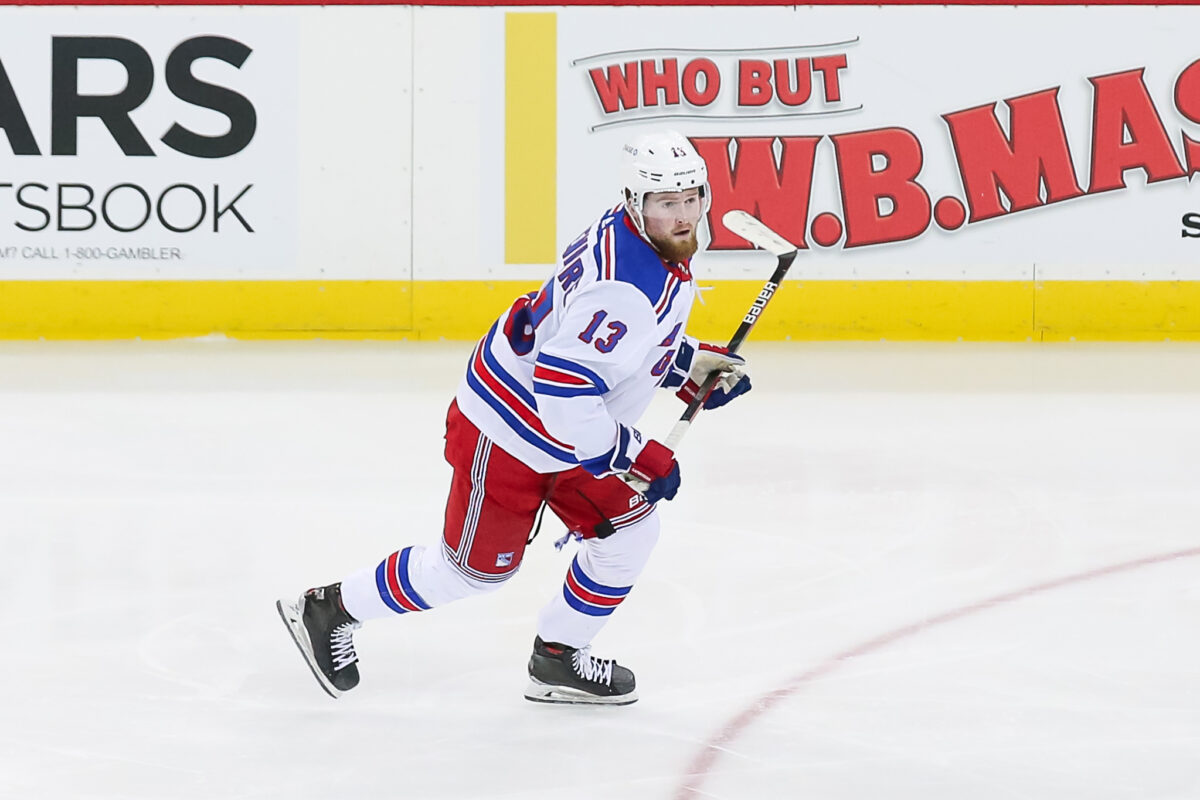Since his selection as the first overall pick in the 2020 NHL Draft, Alexis Lafreniere’s professional trajectory has diverged from the typical path expected of top draftees. Over his initial three seasons, he accumulated 91 points across 216 games, a performance metric that contrasts with the high expectations set for him. His unique situation is partly attributed to the New York Rangers’ competitive status; he was drafted to a team poised for playoff contention the year he was drafted.
Lafreniere, predominantly a left winger, found his opportunities limited due to the presence of established players such as Artemi Panarin and Chris Kreider in his preferred position. Additionally, former Rangers head coach Gerard Gallant showed reluctance to consistently deploy Lafreniere on the right wing. This positional rigidity, coupled with limited exposure on the Rangers’ star-laden first power-play unit, further constrained his ability to fulfill the anticipated star role.
Lafreniere’s Evolution: Development Under Peter Laviolette’s Tutelage
This season marks a notable upturn in Lafreniere’s performance, coinciding with the appointment of Peter Laviolette as the head coach. Demonstrating a departure from his predecessor Gerard Gallant’s strategy, Laviolette has repositioned Lafreniere to right wing, initially alongside Panarin and Filip Chytil and subsequently with Vincent Trocheck following Chytil’s injury. Lafreniere’s adaptation to this role is evident in his statistics: he has amassed 27 points in 47 games, comprising 11 goals and 16 assists.
He is poised to break his career-highs of 19 goals, 23 assists, and 39 points. It is important to recognize that Lafreniere is scoring at a 47-point pace without much power play time, with 23 of his 27 points coming at even strength, which places him fourth on the team. Furthermore, according to Stephen Valiquette’s Clear Sight Analytics, as of Jan. 23, Lafreniere ranks third to last in the league in terms of goals above expected, with 8.02 goals below expected. This context places him in a comparable bracket with renowned goal scorers such as John Tavares and Alex Ovechkin, who are 9.50 and 8.42 goals below expected, respectively.

Lafreniere’s challenges in finishing became particularly evident in the Rangers’ recent defeat against the San Jose Sharks, where he missed two critical opportunities that could have shifted the game’s outcome. This issue underscores a broader trend in his performance, marked by a discrepancy between actual and expected goals. However, there is a statistical anticipation of progression towards the mean for Lafreniere.
Related: Rangers’ Recent Struggles Exposed in Brutal 3-2 Loss to Sharks
As highlighted by Valiquette on X, formerly known as Twitter, this pattern is not unprecedented. He draws a parallel to Josh Anderson of the Montreal Canadiens, who experienced a similar negative deviation in expected goals as of Dec. 13 but then rapidly improved, scoring five goals in the subsequent five games.
Analyzing Lafreniere’s Scoring Trends and Potential for a Rebound
If Lafreniere were to score at his expected goals rate, his tally would stand at 19 goals, elevating his point total to 35 in 47 games. Such a correction would project him to finish the season with approximately 61 points and 33 goals. This potential upswing in his performance would further solidify his season.
Based on Lafreniere’s performance in his past seasons, 2023-24 appears to be an anomaly regarding his finishing ability. In his first three seasons in the NHL, according to Money Puck, he consistently demonstrated a knack for meeting or even exceeding his expected goal totals. The totals being 12 goals on 7.5 expected goals, 19 goals on 11.4 expected goals, and 16 goals on 16.3 expected goals in 2020, 2021, and 2022, respectively. This trend underscores his innate scoring talent and ability to capitalize on scoring opportunities.

However, the divergence in the current season suggests a temporary lapse or adjustment phase rather than a fundamental flaw in his playing style. It’s essential to consider factors like changes in coaching strategies, line combinations, and the adaptation to a new role on the team, which might have influenced his scoring efficiency.
Despite the current shortfall in his expected goals, Lafreniere’s track record indicates a strong potential for rebounding and aligning his actual performance with the anticipated metrics. This potential for recalibration not only bodes well for his personal growth as a player but also promises to reinforce the Rangers’ offensive prowess in the future.
